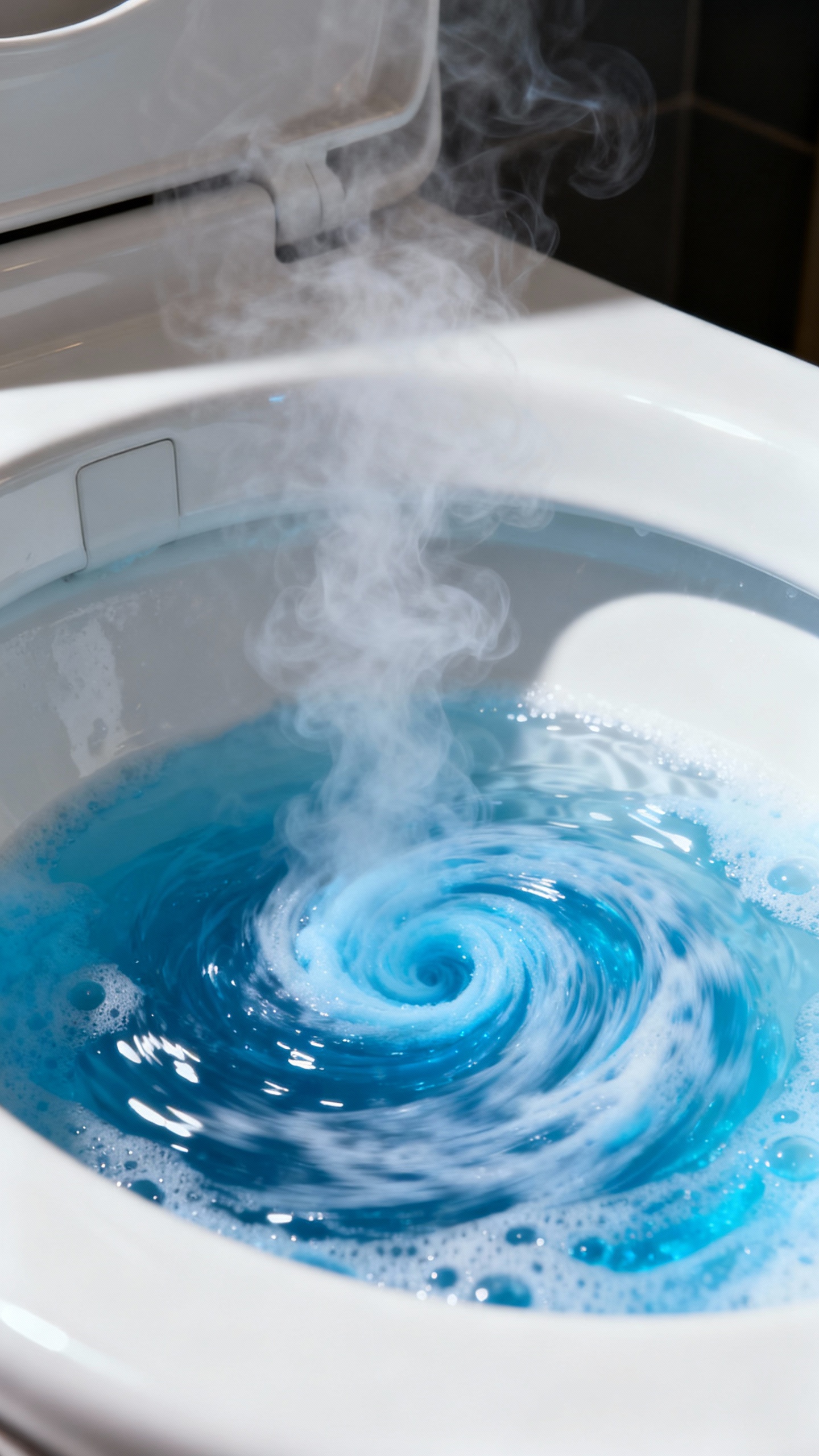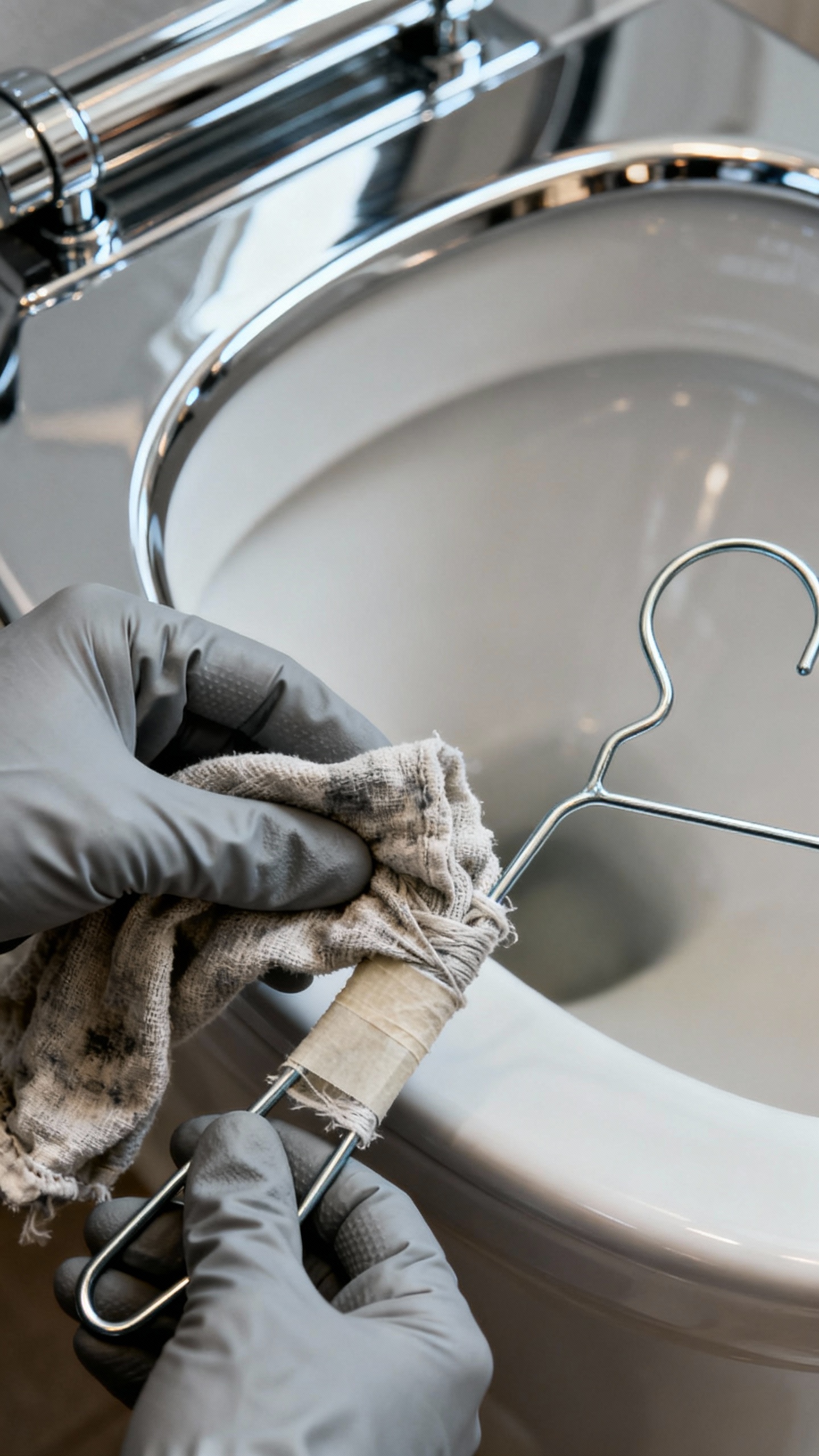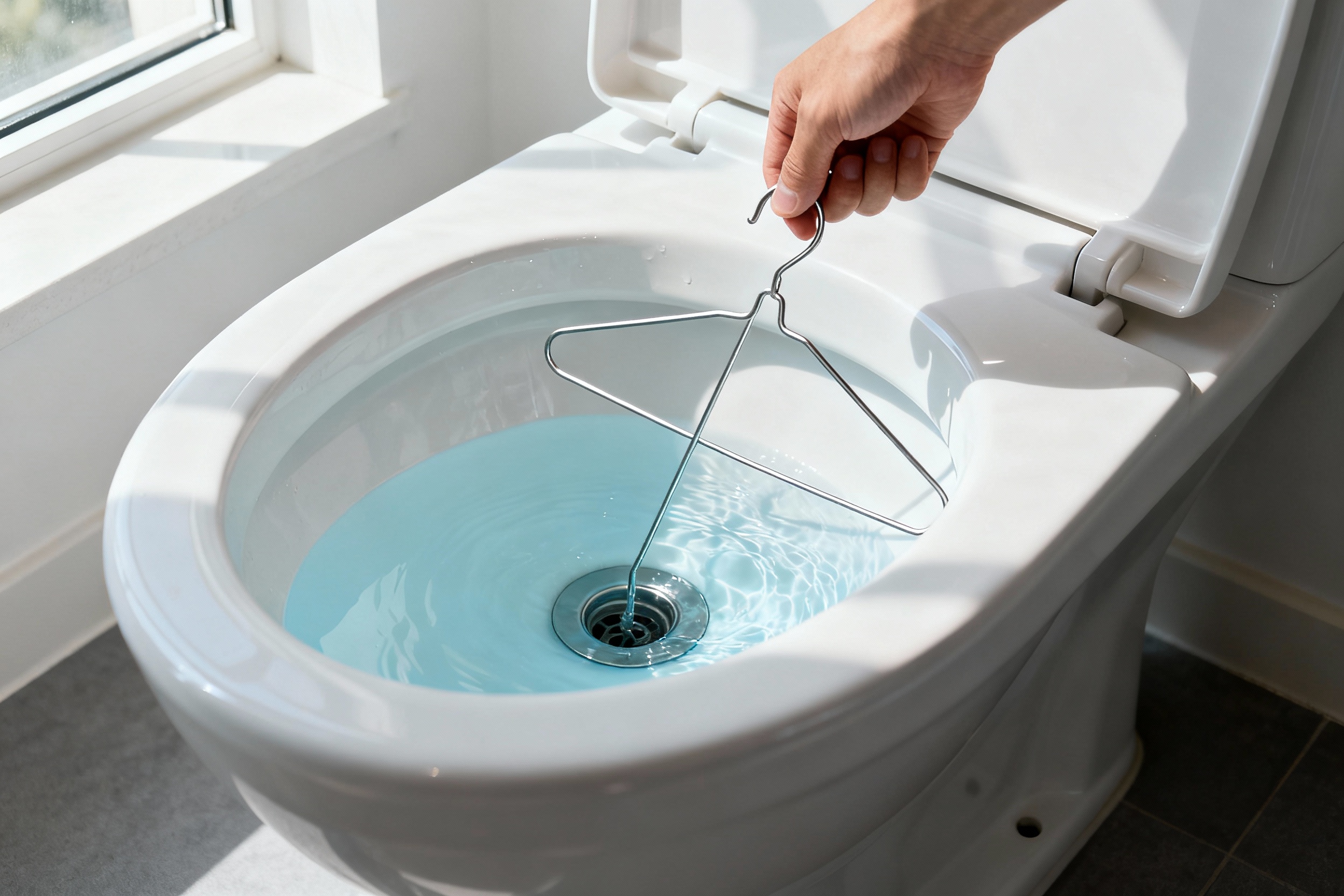You don’t have a plunger. Your toilet is full. Panic tries to set in.
Don’t let it. You can unclog it fast with stuff you already have at home—no gross arm-deep diving required. Let’s get this moving (literally) before things escalate.
First Things First: Don’t Flush Again

If the bowl looks like a bubbling swamp, resist the urge to “try one more flush.” That only risks a flood.
Lift the tank lid and push the flapper down to stop more water entering the bowl if the handle gets stuck. Next, give the water level a minute. If it’s super high, scoop some out with a small container into a bucket or shower drain.
You need room for the magic to happen.
The Fastest Fix: Hot (Not Boiling) Water + Dish Soap
This combo works on most clogs—paper, greasy buildup, minor “overenthusiasm” with TP. It lubricates and breaks things down so the clog slides along like a penguin on ice.
- Add dish soap: Squirt a generous amount—about 1/4 cup—straight into the bowl. No dish soap?
Use hand soap or shampoo. Avoid bleach.
- Heat water: Fill a large pot or kettle with hot water, but do NOT boil it. Aim for very hot tap water or just below boiling.
Boiling water can crack porcelain, FYI.
- Pour it in: From waist height, pour the hot water slowly into the bowl. The force plus heat helps. Don’t go crazy and overflow it.
- Wait 10–15 minutes: Let soaps and heat do their thing.
- Test flush: If the water level lowers and you hear the sweet gurgle of victory, you’re good.
If not, repeat once.
Why this works
Dish soap reduces friction and breaks down greasy residue. Hot water softens paper clumps. Together they lubricate the pathway so the blockage moves along.
It’s science with a dash of “please let this work.”

The “Doomsday” Blend: Baking Soda + Vinegar
When soap and hot water don’t cut it, try the foamy duo. It won’t melt a toy dinosaur, but it can nudge stubborn paper jams.
- Remove excess water: If the bowl is too full, bail some out. You need space for fizz.
- Add baking soda: Pour 1 cup directly into the bowl.
- Add vinegar: Slowly pour in 1–2 cups of white vinegar.
Expect fizz. It might look dramatic. That’s the point.
- Let it sit: Wait 10–20 minutes.
- Add hot water: Pour in a half-gallon of hot (not boiling) water, slowly.
- Flush once: If the water lowers, do a victory nod.
If not, give it one more cycle.
Pro tip
If you hear a faint glug-glug in the drain and the level lowers, you’re winning. Patience beats panic here, IMO.
No Plunger? Make a DIY “Pusher”
Sometimes the clog needs a little mechanical encouragement.
You can create a gentle pushing tool without turning your bathroom into a splash zone.
- Coat hanger snake: Unfold a wire hanger, wrap the end with a rag, and tape it securely. Gently guide it into the drain opening and wiggle to break up the blockage. Don’t scratch the porcelain.
- Toilet brush assist: Wrap a plastic bag around the brush head, secure with a rubber band, and use it to create a soft seal and push down once or twice.
Not elegant, but effective.
- Plastic bottle method: Fill a large plastic bottle with hot water, seal it, and place the nozzle inside the drain hole under the water. Squeeze hard to create pressure. Wear gloves.
Accept your fate.
When to stop
If pushing meets hard resistance or you suspect a foreign object (kids, I’m looking at you), stop. You’ll need a proper auger or a pro.
The Enzyme Option: Gentle, Overnight Helper
If you have time (like, you’re going to bed and you’d like functional plumbing by morning), use an enzyme-based drain cleaner designed for toilets. These biodegradable formulas eat organic waste without harsh chemicals.
- Pour per directions: Follow the label, usually a few ounces.
- Let it sit overnight: The enzymes need time to munch.
- Flush in the morning: Add hot water first if you want to give it a boost.
Note: Avoid caustic chemical drain cleaners in toilets.
They can damage seals, create heat, and don’t play nice with porcelain or septic systems.
Prevent the Overflow (and Clean Up Smart)
The biggest fear? The rising tide. Keep it in check and tidy up like a pro.
- Shut the water off: Turn the valve near the wall clockwise to stop refilling.
- Lid trick: If the bowl starts to fill, lift the tank lid and push the rubber flapper down to stop the flow.
- Post-fix clean: Disinfect the toilet handle, seat, and floor with a bleach solution (1/2 cup bleach in a gallon of water).
Wear gloves. Air out the room.
What not to flush next time
– Paper towels, wipes (even “flushable”), cotton balls – Feminine products – Big wads of TP (fold, don’t wad—your plumbing thanks you)
When You Need Backup: Signs It’s Not a Simple Clog
Sometimes the problem lives deeper than your bowl. Here’s when to call in reinforcements.
- Multiple drains are slow: Shower gurgles when you flush?
That’s a main line hint.
- Sewage smell: Strong odors suggest a bigger blockage.
- Frequent re-clogs: If it clogs weekly, you might have root intrusion or a broken pipe.
- Foreign object confirmed: Toys, deodorizer cages, or “mystery items” need an auger or a plumber. No shame, just solutions.
Quick “Cheat Sheet” Methods (Pick One)
- Fastest: Dish soap + hot water. Wait 10–15 minutes.
Flush once.
- Stubborn clog: Baking soda + vinegar, then hot water. Repeat once if needed.
- No chemistry, just physics: DIY pusher tool or bottle pressure method.
- Overnight option: Enzyme cleaner for gentle, low-drama results.
FAQ
Can I use boiling water to unclog the toilet?
Avoid it. Boiling water can crack toilet porcelain, especially in cold climates or older fixtures.
Use very hot tap water or water just below boiling. You’ll still get the benefit without the risk.
How long should I wait before flushing after adding soap and hot water?
Give it 10–15 minutes. That lets the soap lubricate and the heat soften the clog.
If it doesn’t clear, repeat once and reassess. Don’t keep flushing and praying; that’s a flood waiting to happen.
Do “flushable” wipes actually cause clogs?
Yes, IMO. They don’t break down like toilet paper.
They tangle, snag, and cause mega-clogs, especially in older pipes or septic systems. Trash them instead.
Is it safe to use chemical drain cleaners in a toilet?
Skip them. Many toilet manufacturers and plumbers warn against caustic cleaners.
They can damage rubber seals, warp porcelain, and turn your toilet into a hazardous soup. Enzyme-based cleaners are safer if you want a chemical assist.
What if I don’t have dish soap?
Use hand soap, shampoo, or a bit of laundry detergent. Just avoid adding anything with bleach while also using vinegar—those two don’t mix well.
The goal is lubrication and mild breakdown, not a chemistry experiment.
When should I call a plumber?
If you tried two methods and nothing changed, or you suspect a hard object is stuck, call in the pros. Also call if multiple drains act up or you smell sewage. Your time (and floors) are worth it, FYI.
Conclusion
You can absolutely unclog a toilet without a plunger—and fast.
Start with dish soap and hot water, level up to baking soda and vinegar if needed, and use a gentle DIY push only when you must. Keep the water in check, clean up smart, and ditch the “flushable” wipes habit. With a little patience and a tiny bit of strategy, you’ll be back to flush-and-forget in no time.


